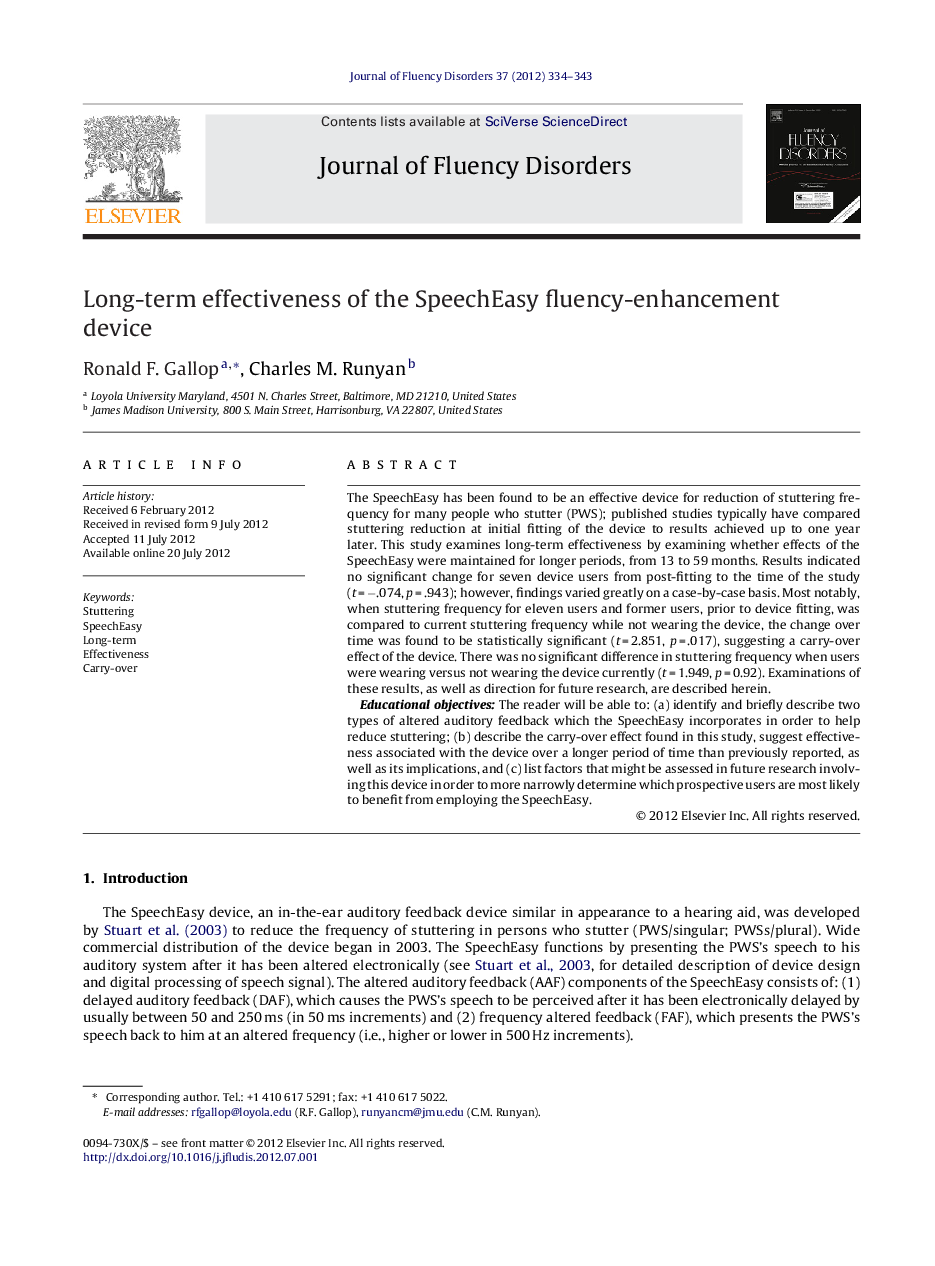| Article ID | Journal | Published Year | Pages | File Type |
|---|---|---|---|---|
| 911426 | Journal of Fluency Disorders | 2012 | 10 Pages |
The SpeechEasy has been found to be an effective device for reduction of stuttering frequency for many people who stutter (PWS); published studies typically have compared stuttering reduction at initial fitting of the device to results achieved up to one year later. This study examines long-term effectiveness by examining whether effects of the SpeechEasy were maintained for longer periods, from 13 to 59 months. Results indicated no significant change for seven device users from post-fitting to the time of the study (t = −.074, p = .943); however, findings varied greatly on a case-by-case basis. Most notably, when stuttering frequency for eleven users and former users, prior to device fitting, was compared to current stuttering frequency while not wearing the device, the change over time was found to be statistically significant (t = 2.851, p = .017), suggesting a carry-over effect of the device. There was no significant difference in stuttering frequency when users were wearing versus not wearing the device currently (t = 1.949, p = 0.92). Examinations of these results, as well as direction for future research, are described herein.Educational objectives: The reader will be able to: (a) identify and briefly describe two types of altered auditory feedback which the SpeechEasy incorporates in order to help reduce stuttering; (b) describe the carry-over effect found in this study, suggest effectiveness associated with the device over a longer period of time than previously reported, as well as its implications, and (c) list factors that might be assessed in future research involving this device in order to more narrowly determine which prospective users are most likely to benefit from employing the SpeechEasy.
► Long-term effectiveness (13–59 months) of fluency-enhancing device explored. ► Results for users inconclusive; 3 improve, 3 worsen, one unchanged. ► Consistent improvement without device from baseline to now. ► Suggestion of carry-over effect of device when not being worn.
